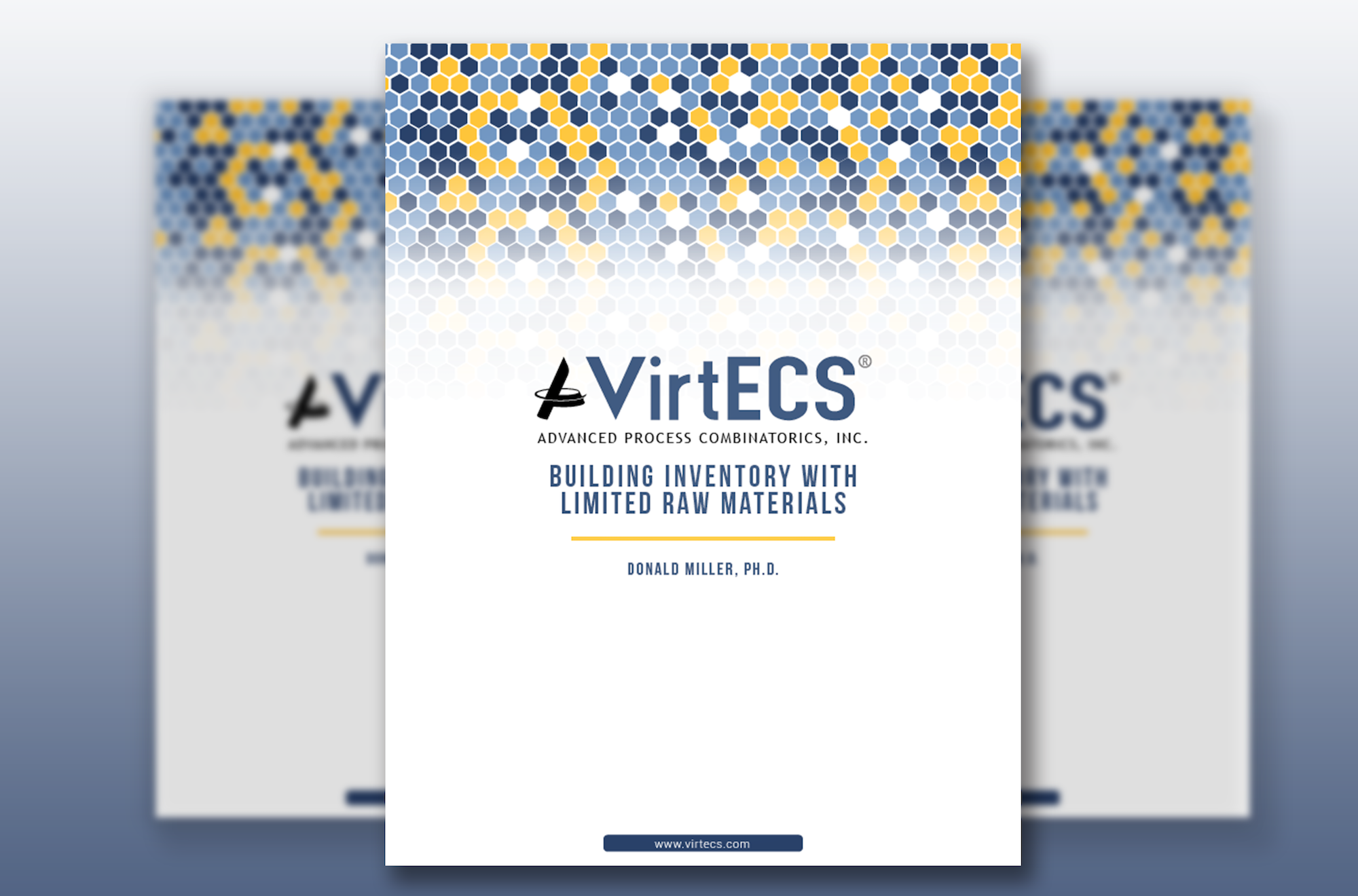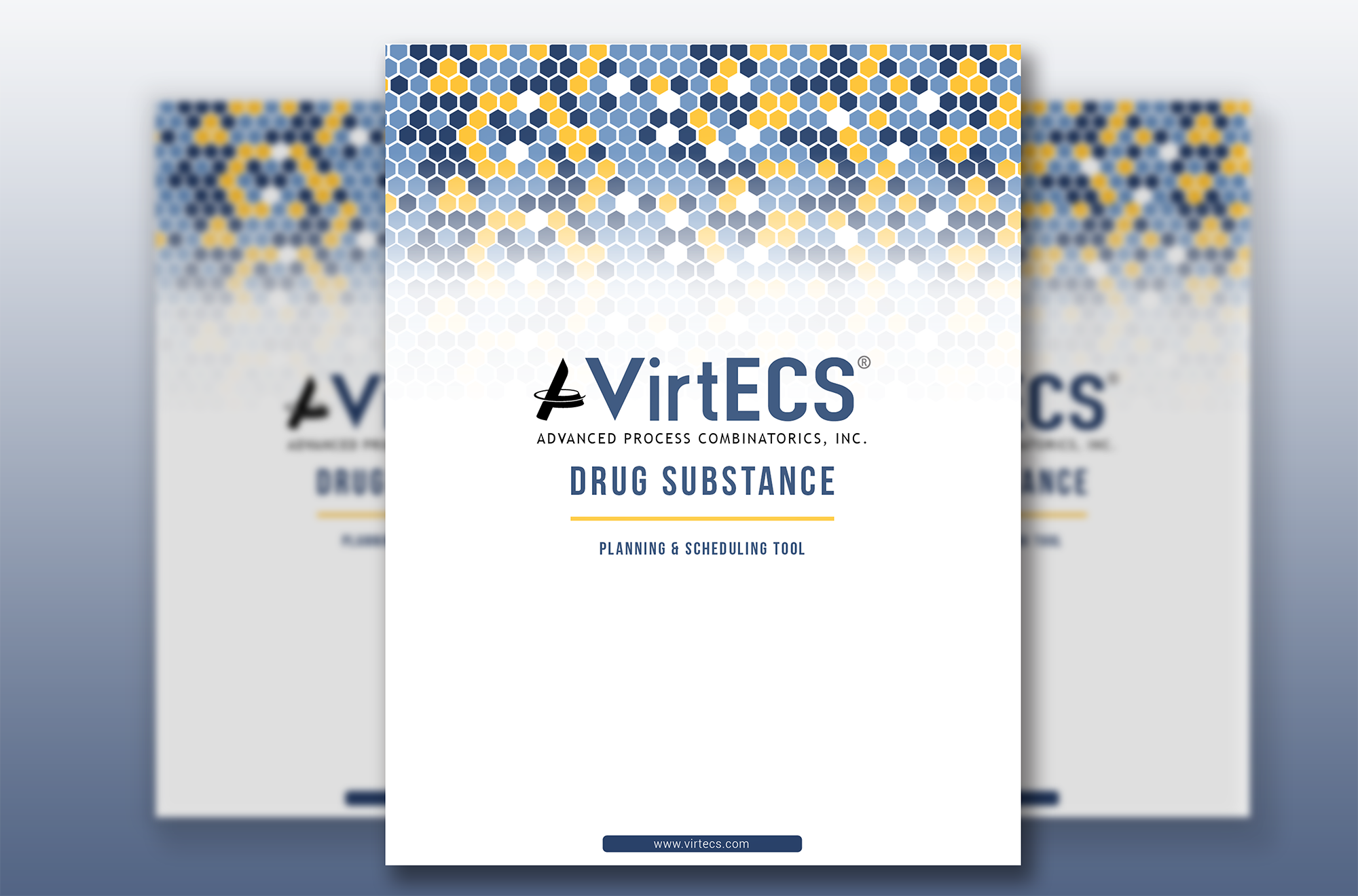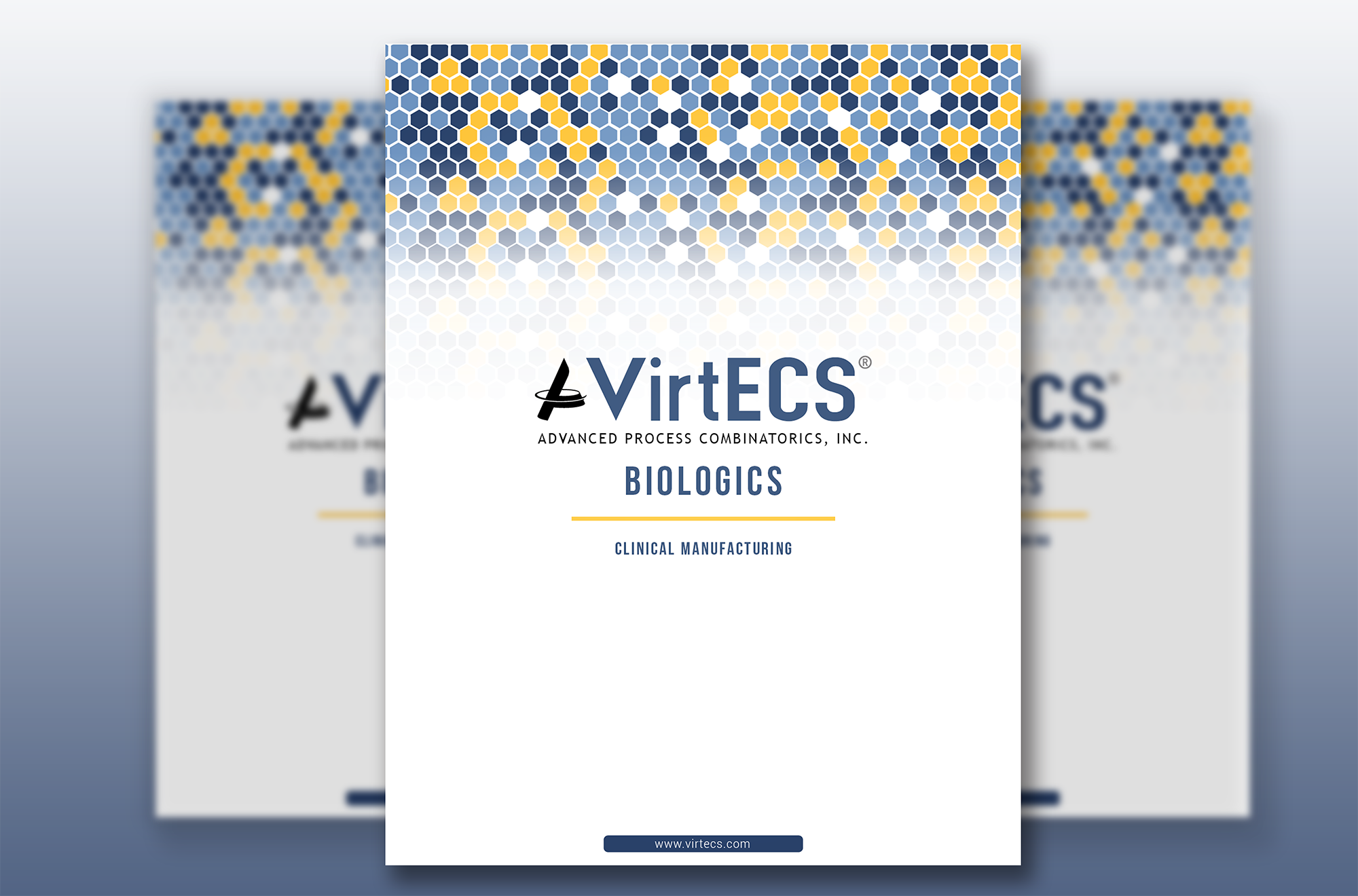
by Kelsey H | Nov 14, 2023 | Industry News, Process Improvement
The past several years have brought frequent and abrupt changes in consumer demand. The COVID-19 pandemic brought sudden surges in spending on household necessities and cleaning products, while the subsequent recovery has resulted in pent-up demand for leisure products and services, among other industries.
In these scenarios, when consumer demand for product suddenly increases, their manufacturing plants may have the opportunity to book new, profitable projects. However, all too often, sites can’t determine if they have the necessary capacity available to take on the increase in production. As a result, the plant can’t commit to the project and ultimately misses out on added revenue.
This is a common scenario for many companies today. According to the G.17 Industrial Production and Capacity Utilization report, the US manufacturing industry is averaging just 79.67% capacity utilization in 2023, down more than one percent over last year. The unused capacity represents millions or even billions of dollars in untapped sales for the industry.
Of course, addressing capacity utilization is an incredibly complex issue. Without a tailored and intelligent solution, identifying sites’ true capacity and optimizing utilization is nearly impossible. On the other hand, plants that invest in a digital twin and planning & scheduling tool can quickly identify opportunities to optimize their processes and fit in added capacity without disrupting current demands.
How VirtECS Plant Models Optimize Utilization
Virtual plant models, such as VirtECS, are designed to simulate each site’s unique design and processes to address bottlenecks that limit their capacity. In the process of analyzing the plant layout, VirtECS can determine the exact amount of excess capacity available. When plants are met with surge opportunities, this knowledge is invaluable, and can be the difference between accepting a new project or turning down a potential new source of revenue.
VirtECS can also take capacity utilization a step further with its extensive scenario analysis capabilities. Using its virtual model, VirtECS can rapidly explore the most attractive production scenarios and select the best possible option, even accounting for which product demands are given higher priority. With this analysis, sites can quickly evaluate which production plan results in the fewest bottlenecks and highest total output. Sites can then add in the potential new project and re-run the analysis to determine if the time, effort, and resources it would need to complete production is worthwhile.
Addressing Future Opportunities with Sales & Operations Planning
To prepare in advance for future changes in consumer demand, we’ve seen several clients have success using VirtECS as a sales & operations (S&OP) planning tool. By adding in finite capacity planning on top of the detailed plant model, VirtECS can update its analysis based on market forecasts, as well as your site’s own historical data. Clients that utilized this feature have been able to use their available capacity to make smarter production decisions and maximize output in anticipation of increased market demands.
Once the production schedule is set, sites can also use VirtECS to address the subsequent adjustments the plant will need to make to account for any added capacity. For example, sites can connect VirtECS to their inventory system to improve supply planning, giving the plant insight on the optimal amount of raw material it should keep on hand to meet the coming production needs. In addition, VirtECS can analyze the site’s labor allotment within its virtual model to address whether more employees will need to be added to the shift, or if the distribution of labor can be optimized to cover the additional projects. To learn more about how to use VirtECS for S&OP, check out our recent articles on demand planning and supply planning.

by Kelsey H | Jun 13, 2023 | Industry News, Process Improvement
For manufacturing organizations, gathering, organizing, and analyzing all the available data about their internal processes is important for many reasons. However, elite companies that want to gain deeper knowledge and implement the most successful strategies have started to look beyond internal data.
Recent reports signal that an increasing number of companies are engaging in external data sharing. According to a recent BCG global survey, nearly 75% of manufacturing managers are considering using external data sharing to improve their operations. In this article, we’ll explain what external data sharing is, the benefits it offers to manufacturers, and some ways to incorporate data sharing into your organization’s processes while still protecting your valuable IP data.
What Is Data Sharing?
Essentially, when businesses engage in external data sharing, it means they join with companies in similar industries or markets to exchange their anonymized data in a protected ecosystem. The goal of data sharing is for each organization to identify trends that could unlock new opportunities for optimization and improvements. Research from McKinsey has shown that external data sharing has become one of the best ways for businesses to improve their existing processes, enter new markets, or develop new competitive advantages.
Though data sharing does require companies to share some of their success with potential competitors, it’s still firmly a worthwhile practice for manufacturers in terms of generating revenue and growth. According to Gartner, organizations that share data externally generate three times more measurable economic benefit than those who do not.
What Are the Risks of External Data Sharing?
While external data sharing offers many strategic benefits, it does also require a high degree of trust between organizations and an extremely secure data sharing network. For many manufacturers, this can be a major barrier to starting a data sharing program. Analysis from Gartner has shown that less than 5% of data sharing programs in 2022 could locate reputable data sources and distinguish between real and falsified data.
Given the current state of cybersecurity, manufacturers can’t afford to make themselves vulnerable to security risks. According to data from Statista, manufacturers were the target of nearly 25% of all cyberattacks worldwide in 2022, the largest share of any industry. In addition to increased exposure to a cyberattack, if businesses are unable to verify the source of data, they may waste time and resources working with fabricated information that won’t bring them true insights or value.
Even when manufacturers can confirm the data comes from trusted sources, they often face other hurdles that make external data sharing more complex in practice than in theory. For example, companies may face issues with interoperability that make it hard to translate the data between different organizations’ systems. With these challenges, manufacturers may find external data sharing difficult to execute, even if they have a strong desire to gain its benefits.
How VirtECS is Built on Secure Data Sharing
For many companies, identifying more opportunities for optimization is one of the primary forces driving their interest in external data sharing – and for good reason. A recent BCG survey revealed that data sharing can unlock billions of dollars in value through optimization alone.
APCI has been developing and perfecting methods to optimize manufacturing processes for more than three decades. We learned long ago through the course of our work that utilizing a larger volume of advanced data will better inform scheduling strategies for all of our customers. That’s why we built our planning, scheduling, and optimization tool, VirtECS, to gather secure knowledge that allows us to continually improve the VirtECS algorithm.
This algorithm drives VirtECS by following each unique plant’s exact model, constraints, and circumstances to find the most optimized schedule possible. The program draws on data from our team’s 30+ years of experience working with manufacturers, allowing us to pool knowledge from a wide range of projects and applications. As APCI has grown into new markets and taken on more projects over the years, VirtECS has continued to learn more and grow stronger for new customers and longtime clients alike. Every time VirtECS is implemented in a new setting, the tool gains access to new information and generates better scheduling recommendations that improve efficiency or create more value.
Over the years, we’ve found that data from one industry can still apply to others. We’ve applied VirtECS to several different industries and use data from each of them to make improvements to the tool, giving our clients access to insights they might not discover otherwise. VirtECS isn’t a repository for our clients’ data, but rather a source of all the lessons learned from that data gathered over many years.
If you’re interested in learning more about how VirtECS can help optimize your production schedule, download our short guide here.

by Kelsey H | Apr 11, 2023 | Industry News, Process Improvement
In recent years, manufacturers have started prioritizing investments in automation and AI for their plants. According to data from IFS, more than 90% of all manufacturers are planning to invest in AI for their production processes. We recently took a closer look at how AI and automation are impacting the pharmaceutical industry, offering benefits like heightened monitoring and detailed data collection.
However, relying entirely on an algorithm to run your critical manufacturing processes can carry significant risks. Over the years, there have been several examples of error-prone and biased decisions coming from AI tools. As such, there are questions about the security and safety of relying on AI and automation, particularly for highly regulated manufacturing fields.
To overcome these concerns, some companies have utilized a Human-In-The-Loop (HITL) approach. HITL refers to a model that requires human interaction at some point in the tool’s process to further strengthen the machine’s results. As noted in a 2018 Stanford study, HITL models are typically more accurate than both AI and human-only models. In addition to improving accuracy in your plant, there are several other leading reasons manufacturers are incorporating HITL models into their sites.
Get Started Quickly & Accurately
AI-powered software relies on a mass amount of data to learn patterns and provide solutions. When your plant introduces a new element of production or starts manufacturing a new product, the data set may not be large enough at first to produce an accurate algorithm. Relying on automation while still in an introductory phase often leads to increased errors and delays, which can be especially troublesome when rolling out a new product to market. Using HITL instead can help the system get up and running more efficiently from the start. As a result, the AI can observe successful examples of the new production pattern and begin adapting its algorithm quickly.
Better Read on Data
While algorithms can process sets of data very efficiently, the solutions it presents are only as strong as the data itself. If much of the data is raw or unorganized, the software will still produce unoptimized results. According to IDC, 90% of all data is “dark data,” meaning it must be labeled or structured before being fed to machine learning programs. This is where human knowledge and intervention becomes invaluable. By 2027, Global Market Insights predicts the data labeling market will be worth $5.5 billion. Once data is sorted or labeled based on employees’ real-world understanding of the plant, the AI can perform a more precise analysis and produce better, more accurate work.
Solve Issues
Despite their reputation for precision, sometimes machines still fail. We’ve seen this fact evidenced in several recent examples, such as AI imaging that produces portraits of models with a few too many fingers and automated recruiting tools that developed a gender bias. In these cases, had there been a dedicated, knowledgeable employee overseeing the AI’s activities, they could have resolved the problem manually before they were put into wider practice.
Increase Safety
In highly sensitive industries, such as pharmaceutical manufacturing, it’s especially critical for products to have “human-level precision.” Though machine learning can improve tracking and monitoring efforts, most still don’t trust AI to correct or repair mistakes. When people’s health is at stake, it’s absolutely essential for each product to be completely correct and safe. Having a human in the loop to double-check and fix errors identified by automated processes is the best way for manufacturers to increase efficiency while also meeting industry safety regulations.
VirtECS, our algorithm-driven planning and scheduling optimization tool, is one example of software using a HITL approach. VirtECS has been designed to make the most of human interactions with the software. Our tool enhances classic AI in manufacturing with an underlying set of equations that describe the fundamental physics of the processes. Decision-makers can then make more efficient use of their process data and human input by using the program to determine its best possible use.
Once the algorithm has completed its analysis, users can still retain direct and precise control over the scheduled activities. When users input new constraints or manipulate the schedule, the algorithm can automatically adjust to provide a new optimized solution, even with little to no training. To learn more about how VirtECS® can support your planning, scheduling, and supply chain operations, download our short guide here.

by Kelsey H | Mar 14, 2023 | Industry News
As we’ve covered in previous articles, semiconductors are making quite the entrance to the United States manufacturing landscape. For years, the semiconductor industry was limited to a small geographic area in Asia. Between newly imposed tariffs and pandemic-influenced supply chain interruptions, it’s recently become more appealing for companies to move their production sites elsewhere. To win over some of the business, the US will soon begin distributing at least $54 billion to companies who bring their semiconductor chip production to the States.
Naturally, many manufacturers are eager to take advantage of the funding. Intel, Samsung, and TSMC are just a few of the corporations who have committed to opening new US plants. Now the question is: where will they choose to build?
What’s at Stake and Who’s in the Game
As of early 2023, semiconductor companies have pledged to put a combined $183 billion into their US facilities, generating upwards of 30,000 new jobs. According to McKinsey, the general manufacturing industry is responsible for 35% of all productivity growth and 60% of all exports in the US. Landing even one of these new semiconductor sites will bring significant economic advantages to the chosen city and state.
As a result, many states have already approached semiconductor companies to position themselves as the best possible location for a new plant. For example, Michigan has highlighted their history of automotive manufacturing and the recent focus on electric vehicles, which rely heavily on semiconductors. NBC News has reported that Kansas has completed proposals on how to best use the federal funding within their state. States like New York, Ohio, and Indiana have already been selected for new sites, which they’re using to their advantage as they pitch their state to other companies.
While the supply chain stability and funding opportunities are attractive for semiconductor companies, making a move to the US can still come with risks. The economy has been in flux, costs are rising, and manufacturers have dealt with a labor shortage for years. Selecting the most ideal location and state within the US is essential to overcome potential roadblocks.
What Manufacturers Should Evaluate When Choosing a Site
When evaluating a potential location for a semiconductor site, one major deciding factor for many companies is the quality and experience of the workforce in the area. Without a skilled labor pool, companies are forced to spend additional time training new hires, use resources to relocate employees, or operate at a lower capacity until more team members are brought on. States that offer prestigious universities or education programs in engineering and other relevant fields can help ensure that the plant is well-staffed with quality employees. Notably, semiconductor producer SkyWater Technology recently chose Indiana as the site of its new plant due to the highly rated workforce training programs at Purdue University.
In addition to quality education programs, a history of manufacturing in the area can also give semiconductor companies access to experienced workers and an existing framework for the industry. Last year, Micron selected upstate New York as the site of a new plant thanks to its reputation as a manufacturing powerhouse, as well as the access to hydro and nuclear power plants. Plus, as we mentioned earlier, states that are home to other manufacturers who will buy semiconductor chips offer a new, built-in customer base. Choosing an area with these resources means it may be easier for the plant to scale up production more efficiently.
Another key factor to consider when selecting a new site is additional incentives a state may offer on top of federal subsidies. According to McKinsey, New York, Arizona, and Texas are just a few of the states who have given tax incentives to semiconductor companies who chose to build within their borders. Unlike federal funding, which businesses will have to apply for, state incentives can be implemented immediately. These additional offers can make it more financially viable for manufacturers to complete their transition to the US.
How to Generate Success Sooner
These advantages and incentives from states can help semiconductor sites get up and running more efficiently, but for continued success, manufacturers often need a more strategic planning solution. For an optimized floor layout and production schedule that maximizes output and profits, we recommend engaging in capacity analysis before plant construction begins.
Using advanced software like VirtECS® during the building process allows your business to avoid bottlenecks and generate the most possible product from the start. Plants that don’t utilize capacity analysis upfront later find they must spend more time and money to fix these issues that prevent them from scaling production when needed. If you’re interested in implementing a capacity analysis and optimization tool at your current or future plant, you can download our short guide to discover the proven benefits of VirtECS®.

by Kelsey H | Feb 16, 2023 | Industry News, Supply Chain
In recent months, healthcare providers and pharmacies across the US have experienced shortages of drugs like amoxicillin, Tamiflu, and children’s Tylenol. Without access to these high-demand medicines, families have been left scrambling to get through the “tripledemic” flu, RSV, and COVID season.
The biggest culprit of the shortages appears to be a surging demand for the products. The end of 2022 saw reported RSV and flu cases reaching heights not seen in more than a decade, according to the New York Times. Drugmakers’ supply chains were simply not prepared to handle the extreme increase in volume after the mild RSV and flu seasons of the last few years.
We understand the heightened pressure pharmaceutical plants feel with each decision they make. When people depend on your company for their health and well-being, solving problems comes with a heightened sense of urgency. As such, we know creating a more stable supply chain is now top of mind for many in the industry. Introducing automation into your manufacturing processes can remove some of the margin of error and give employees running the plant the support they need to be more efficient.
Unfortunately, according to McKinsey, biopharma companies have been slower to embrace automation than manufacturers in other industries. One reason for the late adoption is the long list of regulations that pharmaceutical plants must adhere to, which often delays their ability to introduce new technology. However, many of our pharmaceutical customers have found that the benefits of introducing automation are far greater than they imagined.
Monitoring
The strict regulations in the pharmaceutical industry actually present a perfect opportunity for using automation to enhance rigorous quality control processes. Many plants today still rely heavily on manual monitoring processes, which can consume hours or even days from valuable employees who could be better utilized elsewhere. It also introduces elements of human error, which can lead to wasted product batches and further delays down the line.
Advanced monitoring is an area where automation can be incredibly helpful. Highly sensitive devices are able to quickly track and measure products throughout the production cycle and immediately alert the site to issues that require immediate corrective action. According to data from Pharmaceutical Technology, Pfizer managed to post less than 0.1% product loss for its COVID-19 vaccines using automated onsite monitoring. Automated monitoring systems can also be used to encrypt production data, which keeps valuable plant information more secure from cyber-attacks, which have become a common issue in the manufacturing sector.
Communication
Pharmaceutical manufacturing sites can involve thousands of moving parts to create products that are then distributed to point-of-use destinations scattered across the globe. To maintain a fluid production process while fulfilling a high quantity of orders, plants rely on swift communication among employees. In many cases, sites’ existing communication methods, such as email or even word of mouth, have not scaled at the same rate as production. When employees miss important updates or messages, it can result in wasted batches of product or unexpected downtime.
To facilitate these kinds of sudden and urgent messages, it’s important for facilities to implement a communication tool that better connects team members. When employees are busy working, an automated alert or message notification can be the difference between catching an important production update or wasting a batch of product. Utilizing automated communication tools that quickly direct attention to changes will allow all departments to remain coordinated and run efficiently.
Data Collection
Perhaps an unexpected but particularly useful aspect of automation is the detailed data collection these tools can offer. The most effective automation tools will link to other technologies and track products throughout the production cycle, which means they can gather and share information that will better inform production. This important and accurate data allows facilities to make better decisions about changing production schedules or the size of the product batch on a particular day. Utilizing real-time data means plants can plan their schedule based on current supply chain conditions, rather than estimates.
VirtECS® and VirtECS® Symphony are two such tools that can provide automation and data collection capabilities. VirtECS® automatically tracks real-time data using a virtual plant model to identify opportunities to optimize production and make beneficial scheduling changes. Its web-based counterpart, VirtECS® Symphony, can then publish the new schedule instantly and alert plant employees to urgent updates. VirtECS® Symphony also offers a messaging feature that employees can use to instantly make comments or suggestions to their colleagues across the site. For more information about VirtECS® Symphony, follow the link to download our short informational guide. https://blog.combination.com/guides/virtecs-symphony-guide/

by Kelsey H | Jan 24, 2023 | Industry News, Process Improvement
After years of record growth in the industry, pharmaceutical manufacturers still aren’t slowing down. Recently, several of the world’s largest biopharmaceutical companies announced plans to invest in the expansion of some of their current manufacturing sites. In December, Pfizer committed to investing billions into their plants in Ireland, Belgium, and Michigan to expand production capacity, cold storage, and packaging. Bayer also broke ground on a $43.6 million extension of the packaging and production areas in their Myerstown, Pa. plant last month.
For some of these projects, the companies are spending as much money to expand their existing site as they would to build an entirely new facility. If they’re making such a significant investment, why choose expansion over building a brand-new site? While it may seem like a new plant would present the most advantages, adding onto a current successful site can be just as, if not more, beneficial.
An Existing Labor Base
One advantage an existing site offers over a new build is an already-skilled workforce. Though an expansion will likely require more employees, your company’s existing presence will make it easier to hire more qualified team members. The community will already be familiar with your business, and you’ll have your experienced employees on board to quickly train the new hires. When you open a new plant, you have to hire and train a completely new workforce in an unfamiliar area – a task that can be especially challenging given the manufacturing industry’s ongoing staffing shortage.
Simple Logistics
When manufacturers decide to build a new site, oftentimes their primary goal is to create more production capacity for a particular product. However, for companies trying to expand an existing product line, it can be more efficient to add an extension to a site that already produces the line. Taking this approach simplifies several logistical factors. For one, you can build upon the equipment and processes that already exist at the site, rather than replicating them from scratch in a new facility. Additionally, other precursors needed to begin production, such as storage requirements and a supply chain for raw materials, will already be in place. Adding square footage to your already-functional facility can save your company several steps and get the added production up and running more quickly.
Future Flexibility
In addition to simplifying logistics, creating one larger production site can also allow for more flexibility with the plant’s layout and potential reconfigurations. The added square footage will give you the space needed to address other, non-capacity-related improvements. With the opportunity to rearrange equipment or implement process changes, your site can produce added output and revenue, in addition to the increased capacity. If your production is split up among several smaller individual sites, each one is more limited in the space it has to reconfigure the layout.
An Extensive Database
One of the most important benefits of expanding an existing manufacturing site is the access to years of valuable data already gathered about the plant. Through the programs the site uses for operations, you could have years or decades of information regarding the most efficient or profitable ways to run production. This knowledge will help decision-makers make the best and most strategic choices about how to expand capacity in a way that maximizes the return on the investment. The data may be helpful when building a new plant, too, but there are always slightly different variables that are hard to account for in a new, separate facility.
If you aren’t able to sort through your data to make better-informed investment decisions, you may need to utilize a capacity analysis tool like VirtECS®. VirtECS® can create a virtual model of your unique plant configuration and analyze the best way for your site to add capacity or maximize throughput. For more information about how VirtECS® harnesses data to optimize your planning capabilities, download our short guide here.














